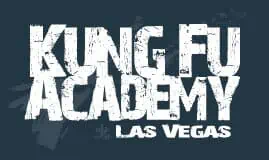Discover the Top 10 Martial Arts Masters in Chinese History
Title: The Top 10 Martial Arts Masters in Chinese History: Unraveling Their Techniques and Impact
Introduction: Martial arts may be popular today, but its roots lie in self-cultivation for the mind and body. Let's dive deeper into the lives and techniques of ten of the most influential martial arts masters in Chinese history.
Yue Fei: A revered general and kung-fu master, Yue Fei is credited with creating Neijia Quan or Xingyi Quan. His style features aggressive, linear movements and explosive power applied from short range, allowing practitioners to attack and defend simultaneously. Yue Fei's techniques have inspired countless martial artists.
Zhang Sanfeng: The legendary founder of Wudang Kung Fu and Tai Chi, Zhang Sanfeng is said to have conceived Tai Chi Chuan after dreaming about or observing a snake and crane fight. A Taoist monk, he is believed to have achieved immortality through his martial arts practices.
Wang Lang: Fascinated by the agility of a praying mantis, Wang Lang founded the Praying Mantis style of kung fu. He studied the insect's movements and incorporated its swift techniques into a new martial arts style that emphasizes speed, precision, and surprise attacks.
Chen Wangting: This Ming Dynasty general created the Chen-style Tai Chi, one of the five major styles of Tai Chi, after retiring to his home in Henan province. Chen Wangting's style combines internal and external practices, focusing on breath control, meditation, and fluid movements.
Sun Lutang: Sun Lutang mastered Xingyi Quan, Bagua Zhang, and Tai Chi Chuan and synthesized them into Sun-style Tai Chi. His contributions to martial arts were so significant that he is often called the "father of modern Chinese martial arts." Sun-style Tai Chi emphasizes quick footwork, fluid movements, and powerful strikes.
Gu Ruzhang: A master of Bagua Zhang and Tai Chi Chuan, Gu Ruzhang was known for his fast footwork and fluid movements. He developed the unique "swimming dragon" technique in Bagua Zhang, which uses circular and spiraling motions to confuse and overwhelm opponents.
Dong Haichuan: Often credited as the founder of Bagua Zhang, Dong Haichuan emphasized circular movement and unpredictability in this internal martial art. Traditional teachers in China regard him as the first identified transmitter of Bagua Zhang knowledge to the wider public.
Yang Luchan: An influential teacher of Tai Chi Chuan during the 19th century, Yang Luchan founded the Yang-style Tai Chi, known for its graceful movements and actions that combine hardness, softness, and naturalness. His teachings have left a lasting impact on Tai Chi practitioners worldwide.
Wong Fei-hung: A master of Hung Gar, Wong Fei-hung excelled in deep stances and weapon mastery, particularly with the staff. His legendary tale of defeating 30 gangsters on the docks of Guangdong showcases his remarkable skills and courage.
Huo Yuanjia: A practitioner of the now-lost Meihuaquan style, Huo Yuanjia drew from aspects of the northern Shaolin long fist style and internal styles like Tai Chi Chuan. A national hero, he defeated foreign fighters in highly publicized matches, uplifting China's spirit during colonization.
Conclusion: These ten martial arts masters exemplify the incredible depth and diversity of Chinese martial arts history. As you practice martial arts today, remember to embrace the spiritual element that has shaped these ancient techniques for self-cultivation and personal growth.
